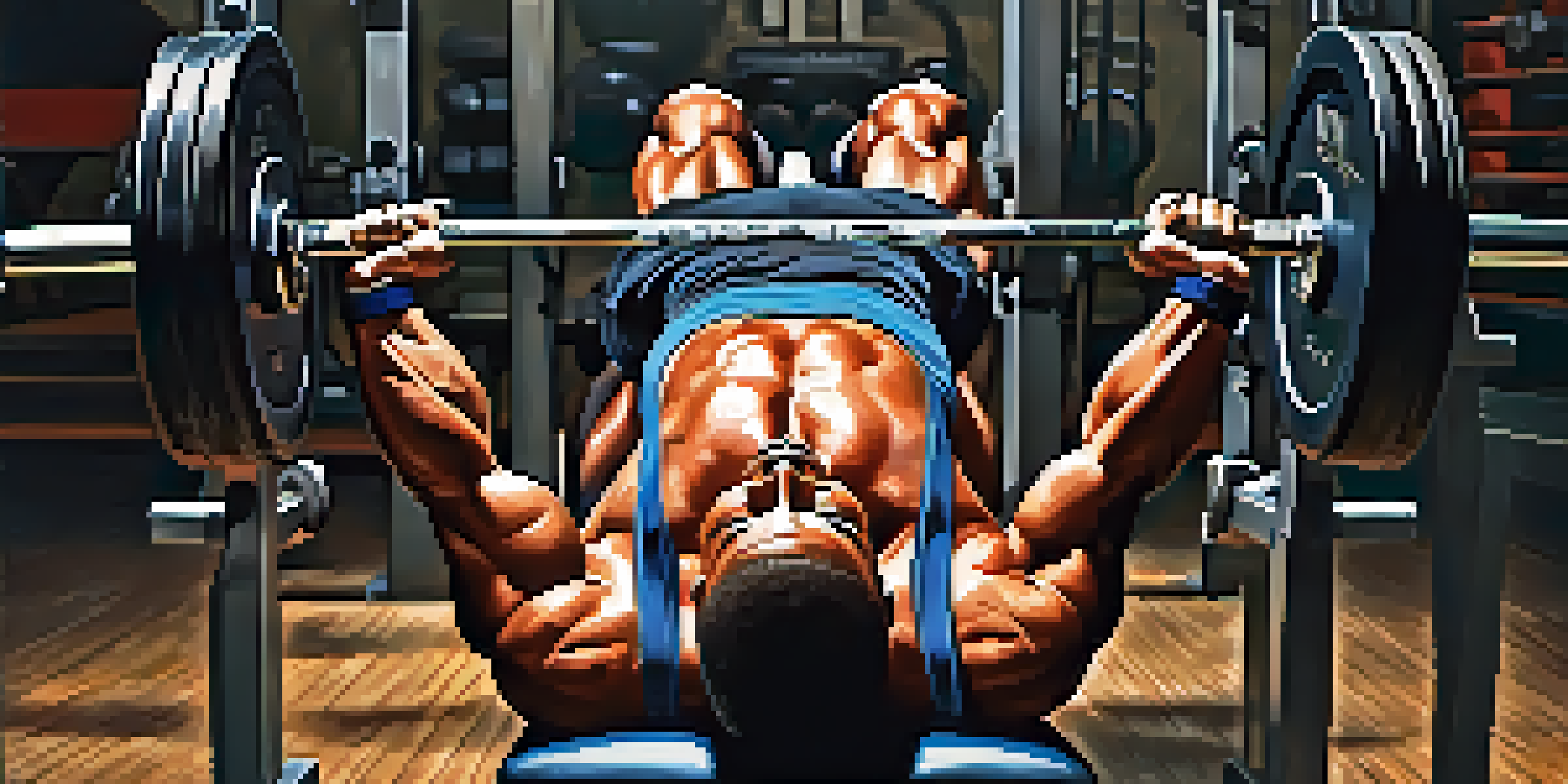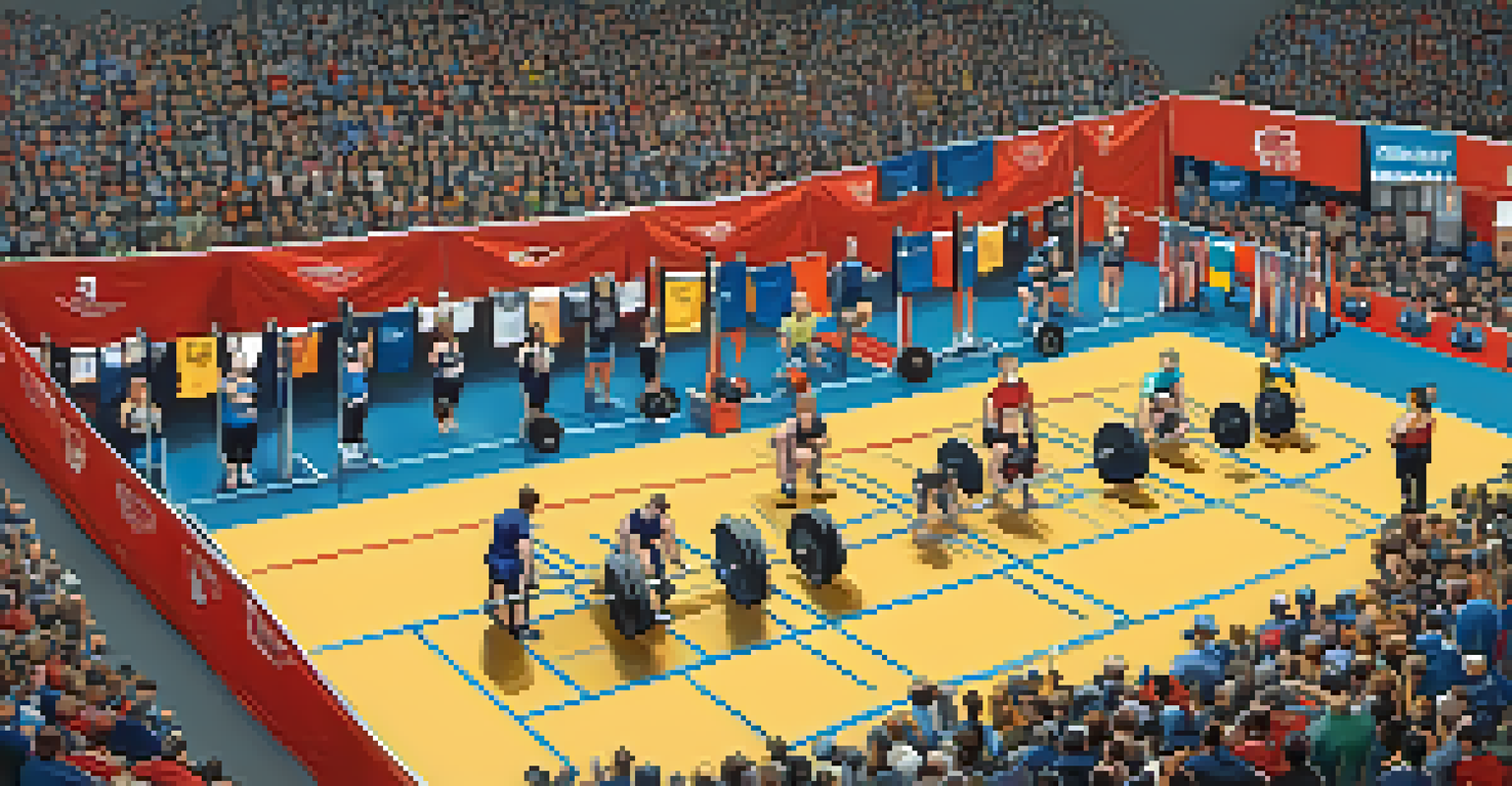Powerlifting Training Programs: A Beginner's Guide

Understanding Powerlifting: The Basics You Need to Know
Powerlifting is a strength sport that focuses on three main lifts: the squat, bench press, and deadlift. These lifts are designed to test your maximal strength and are performed in competitive settings. Unlike bodybuilding, where aesthetics matter, powerlifting is all about lifting the heaviest weight possible in these three movements.
Strength does not come from physical capacity. It comes from an indomitable will.
As a beginner, understanding the significance of proper form and technique in these lifts is crucial. Poor technique can lead to injuries, which can sideline your training efforts. Therefore, it's essential to prioritize learning the correct form before adding weight to the bar.
Powerlifting isn’t just about brute strength; it’s also about strategy and mental toughness. The sport requires discipline in both training and nutrition, as well as a commitment to continuous improvement.
Setting Realistic Goals for Your Powerlifting Journey
Before diving into a powerlifting program, it's important to set realistic and achievable goals. Whether you aim to compete or simply want to enhance your strength, having clear objectives will keep you motivated. Think about what you want to achieve in the short term and long term.

For beginners, a good starting point is to focus on mastering the lifts rather than lifting the heaviest weights. Setting small, incremental goals—like improving your form or adding a few pounds to your lifts each week—can lead to significant progress over time.
Master Technique Before Adding Weight
Focusing on proper form is crucial for beginners to prevent injuries and ensure long-term progress in powerlifting.
Remember, every lifter's journey is unique. Celebrate your milestones, no matter how small, and don’t compare your progress to others. Powerlifting is a personal journey where consistency and perseverance pay off.
Choosing the Right Powerlifting Program for Beginners
There are numerous powerlifting programs available, but not all are suited for beginners. Look for programs that emphasize technique, gradual progression, and allow for adequate recovery. Programs like Starting Strength or the 5/3/1 are great options for those just starting.
Success is the sum of small efforts, repeated day in and day out.
As you explore these programs, consider your schedule and lifestyle. A good program should fit into your weekly routine without feeling overwhelming. Consistency is key, so choose one that you can stick with long-term.
Lastly, don’t be afraid to adapt any program to your own needs. Whether you need to modify the volume or frequency, personalizing your training can help you stay engaged and motivated while ensuring you progress safely.
The Importance of Technique and Form in Powerlifting
In powerlifting, proper technique is everything. Each lift requires specific body mechanics to execute safely and effectively. For beginners, working with a coach or experienced lifter can help you learn the intricacies of each movement.
Practicing in front of a mirror or recording your lifts can provide valuable feedback on your form. Look for common mistakes like a rounded back during deadlifts or flaring elbows in the bench press, and address them early.
Set Achievable Goals for Progress
Establishing realistic, incremental goals helps maintain motivation and celebrates personal milestones throughout your powerlifting journey.
Remember, it's better to lift lighter weights with perfect form than to attempt heavier weights and risk injury. Focusing on technique will not only enhance your performance but also build a strong foundation for future progress.
Nutrition for Powerlifting: Fueling Your Performance
Nutrition plays a pivotal role in your powerlifting success. To support your training, focus on a balanced diet rich in protein, healthy fats, and carbohydrates. Protein is particularly important for muscle repair and growth, so ensure you're getting enough daily.
Meal timing can also impact your performance. Eating a balanced meal or snack containing carbohydrates and protein about an hour before training can provide the necessary energy for your lifts. Post-workout nutrition is equally important—aim to refuel with a protein-rich meal to aid recovery.
Lastly, stay hydrated! Proper hydration helps maintain your strength and energy levels during workouts, so drink plenty of water throughout the day, especially before and after training sessions.
Rest and Recovery: Key Components of Powerlifting
Rest and recovery are just as important as the lifting itself. Your muscles need time to repair and grow stronger after intense workouts, so ensure you're incorporating rest days into your training schedule. Overtraining can lead to burnout and injuries, derailing your progress.
Sleep is also vital for recovery. Aim for 7-9 hours of quality sleep each night to help your body recover and perform at its best. When you’re well-rested, you’ll notice improvements in strength and overall performance.
Nutrition Fuels Your Powerlifting Success
A balanced diet rich in protein, carbohydrates, and healthy fats is essential for supporting training and recovery in powerlifting.
Consider integrating active recovery strategies into your routine, such as light cardio, stretching, or foam rolling. These activities can enhance blood flow and help alleviate soreness, making it easier to get back to training.
Tracking Your Progress: The Path to Improvement
Tracking your progress is essential in powerlifting. Keeping a training journal can help you monitor your lifts, note any changes in technique, and observe your overall strength development. Seeing your improvements over time can be incredibly motivating.
You can also track your body weight and measurements if you’re interested in how your physique changes alongside your strength gains. This holistic approach provides a clearer picture of your progress.

Don’t forget to celebrate your achievements, big or small! Whether it's hitting a new personal record or simply feeling stronger, acknowledging your progress can keep your motivation levels high and your passion for powerlifting alive.